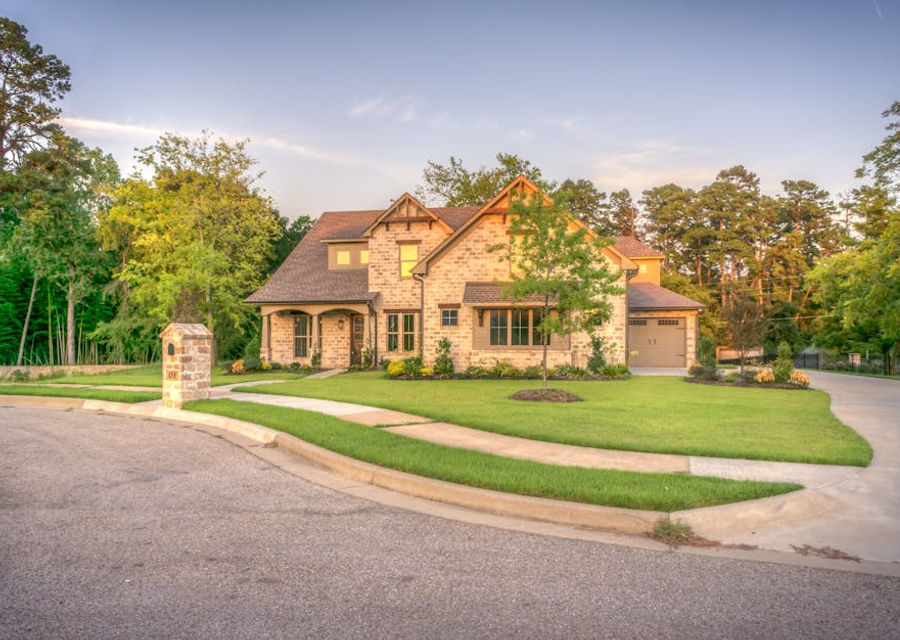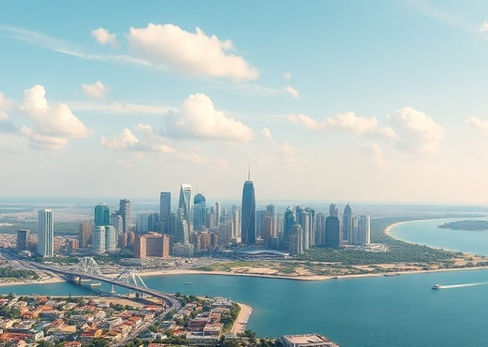Zuckerberg's Palo Alto Real Estate: Impact and Community Concerns
- THE MAG POST

- Aug 12
- 10 min read

The topic of Zuckerberg Palo Alto real estate acquisitions is quite interesting. Mark Zuckerberg's substantial real estate investments in Palo Alto's Crescent Park have stirred considerable debate. Acquiring over 11 homes for more than $110 million, Zuckerberg's actions have led to significant construction and increased security, impacting the neighborhood's tranquility. This situation raises important questions about privacy, community, and the effects of wealth on residential areas. Let's examine the changes and challenges that have emerged in Palo Alto due to these developments.
Crescent Park, a prestigious enclave in Palo Alto, has long been celebrated as a haven for legal minds, business leaders, and esteemed Stanford professors. For many years, residents enjoyed a serene and idyllic lifestyle, characterized by close-knit community bonds and peaceful surroundings. However, the tranquility of this neighborhood experienced a significant shift when Mark Zuckerberg, the renowned billionaire, decided to make it his home. Zuckerberg's presence has sparked considerable changes, primarily due to his substantial real estate investments. He has spent over $110 million acquiring at least 11 properties, leading to extensive construction projects and heightened security measures that have altered the neighborhood's atmosphere.
The Impact of Zuckerberg's Real Estate Investments on Palo Alto
The arrival of Mark Zuckerberg in Crescent Park has undeniably transformed the neighborhood's landscape, both physically and socially. His acquisition of numerous properties, totaling over $110 million, has led to significant construction activities as he seeks to consolidate and customize his estate. This large-scale construction has disrupted the daily lives of residents, causing noise, traffic congestion, and general inconvenience. The presence of heavy machinery and construction crews has become a constant feature, altering the peaceful ambiance that once defined Crescent Park. The neighborhood, once known for its tranquility, now grapples with the challenges of urban development.
Beyond the physical disruptions, Zuckerberg's presence has also introduced a heightened sense of surveillance and security. The increased security measures, while intended to protect his privacy and safety, have created a feeling of unease among some residents. The constant monitoring and presence of security personnel can be intimidating, diminishing the sense of community and openness that was previously cherished. This shift has prompted discussions about balancing privacy and community well-being, as residents navigate the new dynamics of living alongside a high-profile figure. The balance between security and openness remains a key concern.
The real estate investments made by Zuckerberg have also influenced property values in Crescent Park. While some residents may see an increase in their property values as a positive outcome, others worry about the potential for rising property taxes and the displacement of long-term residents who may no longer be able to afford to live in the area. This concern highlights the broader issue of gentrification and the impact of wealthy individuals on local communities. The influx of substantial wealth can lead to significant changes in the socio-economic landscape, potentially disrupting the existing social fabric and creating disparities among residents. The long-term effects on community diversity are a growing concern.
Despite the challenges, some residents acknowledge potential benefits from Zuckerberg's presence, such as increased attention to local infrastructure and community initiatives. The heightened profile of Crescent Park could attract investment in local amenities, parks, and public services, ultimately enhancing the quality of life for all residents. However, these potential benefits must be weighed against the disruptions and concerns raised by his real estate activities. Open communication and collaboration between Zuckerberg and the community are essential to address these issues and ensure that the neighborhood's unique character and values are preserved. The importance of community engagement cannot be overstated.
In summary, Mark Zuckerberg's real estate investments have brought both opportunities and challenges to Crescent Park. While the potential for increased property values and community investment exists, the disruptions caused by construction and heightened security measures cannot be ignored. The neighborhood faces the task of adapting to these changes while preserving its unique identity and fostering a sense of community among all residents. Balancing the interests of a high-profile figure with the needs and concerns of the community requires careful consideration and open dialogue. The future of Crescent Park hinges on finding this balance.
The Evolution of Crescent Park Before and After Zuckerberg
Before Mark Zuckerberg's arrival, Crescent Park was a quintessential California neighborhood, characterized by its tree-lined streets, charming homes, and strong community bonds. The area was home to a diverse mix of professionals, including doctors, lawyers, business executives, and Stanford University professors, who contributed to its vibrant and intellectual atmosphere. The annual block parties were a highlight, bringing neighbors together in celebration and fostering a sense of camaraderie. Children played freely in the streets, creating a soundtrack of laughter and joy that epitomized the idyllic suburban lifestyle. This sense of community and tranquility defined Crescent Park for decades.
The transformation of Crescent Park began with Zuckerberg's strategic acquisition of multiple properties, starting in 2011 and continuing through 2025. These purchases, totaling over $110 million, were aimed at creating a consolidated compound that would provide him with privacy and security. The initial phase involved the purchase of several adjacent homes, which were subsequently combined into a single estate. This consolidation required extensive renovations and construction, leading to significant disruptions for the surrounding neighbors. The once-quiet streets became filled with construction vehicles, and the peaceful atmosphere was replaced by the sounds of machinery and demolition.
One of the most contentious aspects of Zuckerberg's real estate endeavors was his attempt to demolish four homes and rebuild them into a smaller compound. This proposal faced strong opposition from the Palo Alto board, which ultimately rejected the application. In response, Zuckerberg adopted a more gradual approach, demolishing houses on two lots and clearing the yard of a third. These actions, while less drastic than the initial proposal, still had a significant impact on the neighborhood. The removal of existing homes and the clearing of land altered the physical landscape and disrupted the sense of continuity that had long defined Crescent Park.
The construction activities extended beyond mere demolition and clearing. The excavation of a basement on one of the lots involved heavy machinery and lasted for over a year, causing further inconvenience to residents. The installation of a hydrofloor pool also required significant construction work, adding to the ongoing disruptions. These projects transformed the once-familiar landscape into a construction zone, impacting the daily lives of those living nearby. The constant noise, dust, and traffic congestion became a source of frustration for many, altering the character of the neighborhood.
In conclusion, the evolution of Crescent Park from a tranquil residential neighborhood to a site of extensive construction and heightened security reflects the significant impact of Zuckerberg's real estate investments. While the area continues to be an affluent and desirable place to live, the changes brought about by his presence have undeniably altered its character. The challenge for Crescent Park is to navigate these changes while preserving its sense of community and ensuring that the needs and concerns of all residents are addressed. The future of the neighborhood depends on finding a balance between progress and preservation.
Navigating Privacy and Community in Palo Alto
The influx of high-profile figures like Mark Zuckerberg into residential neighborhoods raises complex questions about privacy, security, and community well-being. While individuals have the right to privacy and security, their actions can have a significant impact on the surrounding community. Finding a balance between these competing interests is essential to maintaining a harmonious living environment. In the case of Crescent Park, Zuckerberg's extensive security measures and construction activities have sparked discussions about the appropriate boundaries between personal privacy and community disruption. The challenge lies in creating an environment where both individual rights and community needs are respected.
One of the key concerns raised by Zuckerberg's presence is the impact of heightened security measures on the sense of community. The increased surveillance and presence of security personnel can create a feeling of unease and intimidation among residents. While security is undoubtedly important, it should not come at the expense of openness and trust within the community. Striking a balance requires careful consideration of the types of security measures employed and their potential impact on the social fabric of the neighborhood. Transparent communication and community engagement are crucial to ensuring that security measures are implemented in a way that respects the rights and concerns of all residents.
Construction activities, such as those undertaken by Zuckerberg, can also pose significant challenges to community well-being. The noise, dust, and traffic congestion associated with large-scale construction projects can disrupt daily life and negatively impact the quality of life for residents. Minimizing these disruptions requires careful planning and coordination. Construction schedules should be designed to avoid peak hours, and measures should be taken to mitigate noise and dust pollution. Open communication with residents about construction plans and timelines is essential to managing expectations and addressing concerns. By prioritizing community well-being, developers can minimize the negative impacts of construction activities.
Community engagement plays a vital role in navigating the challenges posed by high-profile residents and their activities. Open dialogue between residents, developers, and local authorities can help to identify and address potential concerns before they escalate. Community meetings, surveys, and other forms of engagement can provide valuable feedback and inform decision-making. By fostering a collaborative environment, communities can work together to find solutions that balance individual rights with the needs of the collective. The importance of community participation cannot be overstated.
In conclusion, navigating privacy and community in neighborhoods like Crescent Park requires a commitment to open communication, mutual respect, and collaborative problem-solving. Balancing the rights of individuals with the needs of the community is essential to maintaining a harmonious living environment. By prioritizing community engagement and transparent decision-making, neighborhoods can navigate the challenges posed by high-profile residents and their activities while preserving their unique character and sense of community. The future of Crescent Park depends on finding this balance and fostering a spirit of cooperation among all residents.
The Broader Implications for Affluent Neighborhoods in Palo Alto
The changes occurring in Crescent Park reflect broader trends in affluent neighborhoods across Palo Alto and other tech hubs. As wealth concentrates in these areas, driven by the success of technology companies and the influx of high-income individuals, the dynamics of these communities are shifting. Rising property values, increased development, and heightened security measures are becoming common features, altering the character of these neighborhoods and raising questions about affordability, community cohesion, and the preservation of local identity. Understanding these broader implications is crucial for addressing the challenges and opportunities facing affluent neighborhoods in Palo Alto.
One of the most significant challenges is the increasing cost of housing in affluent neighborhoods. As property values soar, long-term residents, including families and seniors, may find it increasingly difficult to afford to live in these areas. This can lead to displacement and a loss of community diversity. Addressing this challenge requires a multi-faceted approach, including policies that promote affordable housing options, protect existing tenants, and provide financial assistance to those at risk of displacement. By prioritizing affordability, communities can ensure that affluent neighborhoods remain accessible to a wide range of residents.
Increased development, driven by the demand for luxury homes and amenities, can also transform the character of affluent neighborhoods. The construction of large-scale projects can disrupt daily life, alter the physical landscape, and erode the sense of community that was once cherished. Managing development requires careful planning and regulation. Zoning laws should be designed to preserve the unique character of neighborhoods, and development projects should be subject to thorough environmental and community impact assessments. By prioritizing sustainable development practices, communities can minimize the negative impacts of construction and preserve their local identity.
Heightened security measures, often implemented by high-profile residents, can also have a chilling effect on community cohesion. The presence of security personnel and surveillance cameras can create a feeling of unease and distrust among residents. While security is undoubtedly important, it should not come at the expense of openness and social interaction. Communities should work together to develop security strategies that balance individual safety with the need to maintain a welcoming and inclusive environment. Transparent communication and community engagement are essential to ensuring that security measures are implemented in a way that respects the rights and concerns of all residents.
In conclusion, the broader implications for affluent neighborhoods in Palo Alto are significant and far-reaching. Addressing the challenges of affordability, development, and security requires a proactive and collaborative approach. By prioritizing community engagement, sustainable development practices, and policies that promote affordability and inclusivity, affluent neighborhoods can preserve their unique character and ensure that they remain vibrant and welcoming places to live for all residents. The future of these communities depends on finding a balance between progress and preservation, and fostering a sense of shared responsibility among all stakeholders.
Strategies for Sustainable Community Development in Palo Alto
To ensure the long-term health and vitality of affluent neighborhoods like Crescent Park, Palo Alto must adopt strategies for sustainable community development. These strategies should focus on balancing economic growth with social equity, environmental protection, and community well-being. By prioritizing sustainability, Palo Alto can create neighborhoods that are not only prosperous but also inclusive, resilient, and environmentally responsible. This requires a holistic approach that considers the interconnectedness of economic, social, and environmental factors. Sustainable community development is essential for creating a thriving and equitable future for all residents.
One key strategy is to promote mixed-income housing options throughout Palo Alto. This can be achieved through policies that incentivize the development of affordable housing units in affluent neighborhoods, as well as regulations that prevent the concentration of low-income housing in specific areas. By creating a mix of housing types and price points, Palo Alto can foster greater economic diversity and prevent the displacement of long-term residents. Mixed-income housing can also promote social interaction and understanding among residents from different backgrounds, strengthening community bonds and reducing social segregation. The benefits of mixed-income housing are numerous and far-reaching.
Another important strategy is to invest in public transportation and infrastructure. By improving access to public transportation, Palo Alto can reduce traffic congestion, lower greenhouse gas emissions, and make it easier for residents to access jobs, services, and amenities. Investments in infrastructure, such as bike lanes, sidewalks, and parks, can also enhance the quality of life for residents and promote healthy lifestyles. Sustainable transportation and infrastructure are essential for creating livable and environmentally friendly neighborhoods. These investments can also create economic opportunities by supporting local businesses and attracting new residents and visitors.
Community engagement is also crucial for sustainable community development. By involving residents in decision-making processes, Palo Alto can ensure that development projects reflect the needs and priorities of the community. Community meetings, surveys, and other forms of engagement can provide valuable feedback and inform the design of projects. Transparent communication and collaboration between developers, local authorities, and residents are essential for building trust and ensuring that development projects benefit the entire community. Community engagement can also empower residents to take ownership of their neighborhoods and work together to address local challenges.
In conclusion, strategies for sustainable community development are essential for ensuring the long-term health and vitality of affluent neighborhoods in Palo Alto. By promoting mixed-income housing, investing in public transportation and infrastructure, and prioritizing community engagement, Palo Alto can create neighborhoods that are not only prosperous but also inclusive, resilient, and environmentally responsible. Sustainable community development requires a commitment to balancing economic growth with social equity, environmental protection, and community well-being. By adopting a holistic and collaborative approach, Palo Alto can create a thriving and equitable future for all residents.






















































Comments